IRDAI Registration No. : 016 Valid Till : 15-05-2026 , CIN Number: U85199KA2002PTC030218
Spring is a beautiful season, but its also a season of allergies. As we jump into the beginning of spring plants release pollen and millions of people with hay fever start to sniffle and sneeze. While there is no universal cure for all allergies. you can take steps to curb your springtime sniffles from medication to household habits.
The immune system sees pollen as a danger and releases antibodies that attack the allergens. That leads to the release of chemicals called histamines into the blood. which trigger runny noses. itchy eyes. and other symptoms that are all too familiar if you have allergies.
Pollen can travel for miles, so it's not just about the plants in your neighborhood. Common triggers are found in trees, grasses, and weeds. Pollen counts are usually higher on breezy days when the wind picks up these sneeze-inducing grains and carries them through the air. Rainy days, on the other hand, wash away the allergens.
Antihistamines are substances that block histamine protein activity in the body that triggers allergy symptoms, such as sneezing, itchy eyes, and a scratchy throat. Over-the-counter (OTC) and prescription antihistamine medications are effective for symptom relief, but they can cause side effects, such as drowsiness and nausea. As a result, some people wish to try natural alternatives. The following solutions are the best natural antihistamines.
Vitamin C
Oxidative stress plays a key role in allergic diseases. Vitamin C is a powerful antioxidant and anti-inflammatory. It can be found in many fruits and vegetables, such as bell peppers, broccoli, cantaloupe, melon, cauliflower, citrus fruits, tomatoes, and strawberries.
Bromelain
Bromelain is an enzyme found in the core and juice of pineapples and is also available as a supplement. Bromelain is a popular natural remedy for swelling or inflammation, especially of the sinuses and following injury or surgery.
Quercetin
Quercetin is an antioxidant flavonoid found in many plants and foods. Research suggests that adding quercetin to the diet may help to relieve allergy symptoms. Quercetin is naturally present in many foods and herbs, including apples, berries, black tea, broccoli, grapes, green tea, peppers, red onions, and red wine.
As women age, it is crucial to take proper precautions to prevent vision loss and serious blindness, as women tend to live longer than men and are at a higher risk for developing various eye diseases. If you are a woman over the age of 40. be sure to schedule a dilated eye exam annually, as well as when you notice any change in your vision. If you have any family history of eye health issues, bring these concerns to your doctor for additional safety measures. Make sure to wear UV eye protection or a brimmed hat when outdoors, no matter the season. If you are already wearing glasses or contact lenses, clean and sanitize them daily to avoid bad bacteria coming in contact with your eyes.
Keeping a healthy lifestyle can also help promote eye health! Be sure to engage in a physical activity you enjoy regularly, eliminate tobacco products, and follow a nutritious diet. Many fruits and vegetables include necessary vitamins and minerals to keep your eyes healthy. If you're unsure of where to start, talk to your doctor or a dietician to get started. Be sure to also learn more about your Wellness Program for any challenges or learning resources to promote a healthy lifestyle!
One of the best ways to preserve your eye health is to sustain proper blood flow circulation to the optic nerve. This can be accomplished through proper hours of necessary sleep, medications, or moisturizing eye creams.
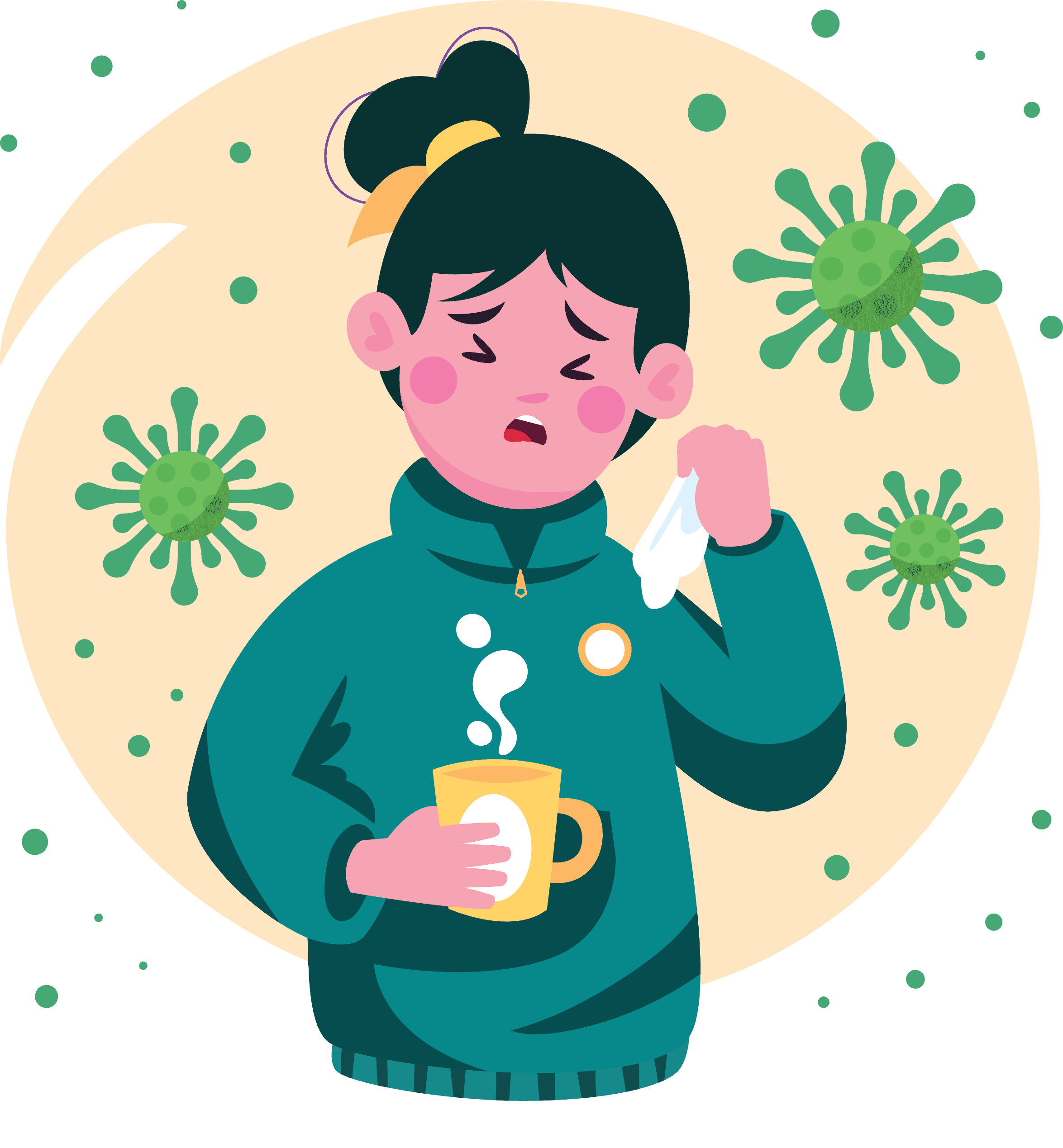
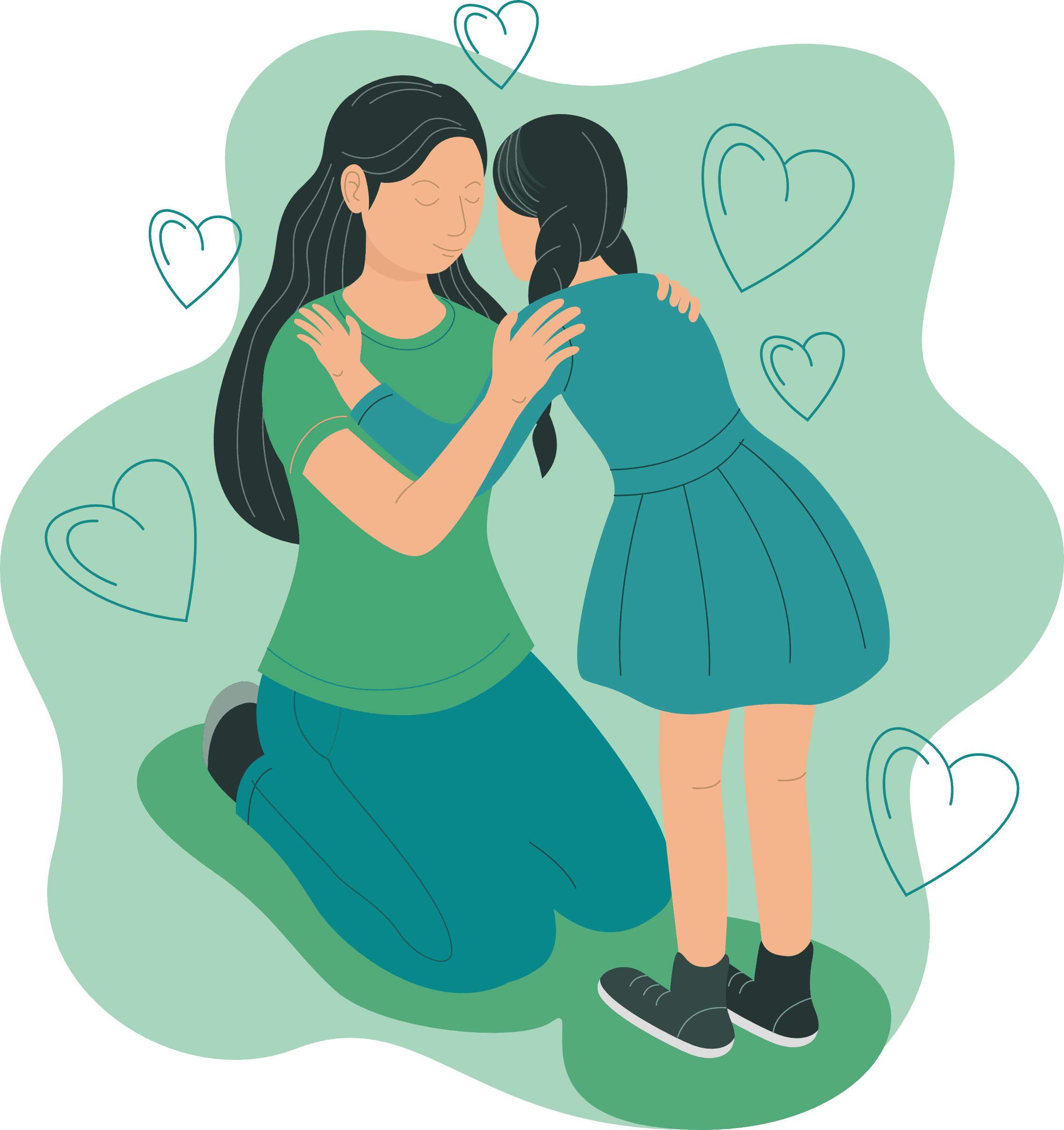
Sunday, May 10th is Mother's Day! I don't know about you but being a mom seems like a lot of hard work to me! Mothers are known to have one of the most important jobs around - they help shape us into the individuals we are today and are known to go above and beyond their job title as MOM, always working around the clock. Want to show your mother you appreciate her on her special day but don't know where to start? Check out our top 10 ways for you to surprise your mother on Mother's Day! And if all else fails remember the best gift of all is to tell your mother you love her!
Healthy employees make happy employees and May is Employee Health and Fitness Month! Now is a great time to reflect on what you do as a company to help your workforce prioritize their health and wellness not only on the job, but at home as well. Healthy employees have shown to be more productive, miss less time at work, and use their health insurance less. Many employers can help emphasize health in both small and big Ways.
Start by making little changes, like removing unhealthy choices. such as soda and candy from break rooms and vending machines. Offer healthier options such as flavored water and fruit. Encourage taking a walk during their lunch break. Work your way up to big changes such as offering wellness challenges, participating in a local race as a company, or even having an onsite event where they can have their biometrics done and speak with a health advocate or coach on site. Reach out to your dedicated Wellness Coordinator today to find out how we can help you optimize your Wellness Program and your employee's health!
A natural time to adjust your body to a new fitness routine is through the elements. Use the change of seasons to change up your workout or form of exercise, especially if you dread those cold winter months.


As the weather shifts from chilly and frigid to sunny and warm, chances are the outdoor grill will be uncovered and fired up once more. Grilling food creates wonderful meals, memories, and smells. Yet along with the fun come serious safety concerns, most notably an increased risk of house fires.
In order to keep yourself safe while grilling up those summertime dishes, keep in mind some of the following tips. It's very important to make sure your grils located a safe distance away from your home, any deck railings, and low-hanging trees or branches. Whether you use charcoal, gas, or propane grills, you should always make sure children and pets are more than three to four feet away at all times.
When lighting a gas grill, never ignite the grill while the lid is closed. If you prefer a charcoal grill and rely on starter fluid to ignite your flame, keep the fluid out of the reach of children and away from heat sources. When using propane grills, be sure to monitor your propane tank and hose for leaks frequently.
No matter which grill you utilize during those warm months, make sure you never leave your grill unattended. Grilling may be one of the most popular ways to cook food but it can also be very hazardous if not done with proper care and guidance.
Ingredients
Directions
Nutrition
Por serving : 1 chicken thigh with 2 teaspoons sauce: 245 calories, 15g fat (3 saturated fat), 76mg cholesterol, 358mg sodium, 6g carbonydrate (5g sugars, O fiber), 21g protein.

Has your health care provider diagnosed you with a predisease condition? This is the stage of change in your health often found through routine screenings. Such exams can identify conditions not at the stage that classifies them as disease but also not at a level entirely disease-free.
Common predisease conditions include:
Elevated blood pressure: Your blood pressure levels are 120 to 129 systolic and less than 80 diastolic. It's considered a predisease when it's higher than normal (<120 /80) but not elevated enough for a diagnosis of High Blood Pressure Stage 1.
Call to action: Prediseases often progress to full-on diseases, unless we take preventive steps. Say your provider determines your blood pressure is inching upward. You can take steps to control it, such as losing excess weight and self-checking your blood pressure routinely, often before medication is needed. The same is true with prediabetes, undesirable cholesterol readings, and to a lesser extent low bone mineral density.
Treating prediseases via lifestyle often diet, stress changes control and exercise can be far better than taking medication with potential side effects. Note: Do not confuse predisease with pre-existing condition, which is an insurance term. Pre-existing refers to any condition for which you have received diagnosis and treatment before you enrolled in a new health care plan: a situation that no longer disqualifies subscribers from enrolling.
Q: How can I adapt to rapid change?
A: Here are some helpful tips if you're struggling to keep up with a fast-moving world:
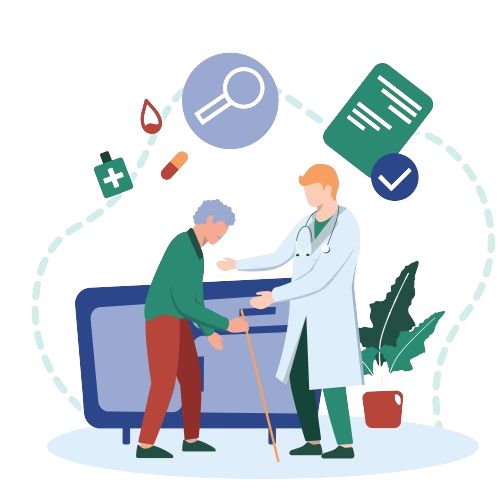
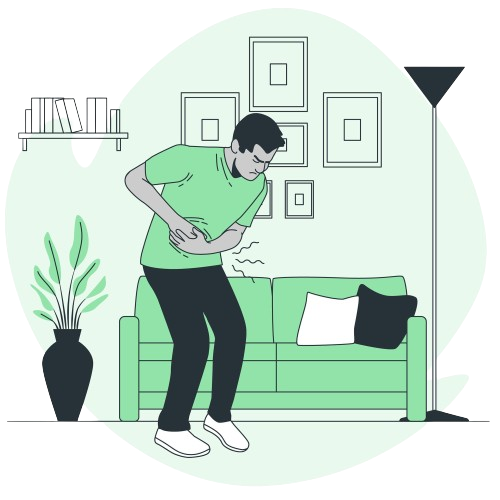
In the Know: Gastroenteritis
Gastroenteritis is a common, and sometimes miserable, stomach infection. It's often called the stomach flu, a tummy bug or food poisoning. But it's caused by viruses or bacteria and, sometimes, parasites, according to the National Institute of Diabetes and Digestive and Kidney Diseases.
Gastroenteritis involves inflammation of the intestines, which causes a host of unpleasant symptoms, including cramps, nausea, watery diarrhea, vomiting, lack of appetite and fever.
There are 2 main types of gastroenteritis:
1. Viral gastroenteritis is the most common type Several viruses can cause the infection, but norovirus is the most common, resulting in 19 to 21 million cases of viral gastroenteritis each year.
The disease spreads easily from one person to another on unwashed hands, or from close contact with someone who has the infection: for example, sharing food at a picnic. Viral gastroenteritis often spreads when people live or interact in close quarters, such as in college dorms, nursing homes or on cruise ships.Handling items contaminated with fecal matter, such as diapers, and not washing hands thoroughly can also cause the infection to spread. In addition, gastroenteritis can be contracted from food served in restaurants that's prepared by people who haven't followed good sanitary procedures.
2. Bacterial gastroenteritis is the other type of gastroenteritis It's often called food poisoning because the bacteria (such as E. coli and salmonella) that cause this form of the disease can infect food.
For example, bacterial pathogens can multiply on foods that need refrigeration and are left outside too long in hot weather at a cookout. Or, if meat or poultry has come into contact with the bacteria and isn't cooked thoroughly enough, the pathogens can multiply and infect people who eat the contaminated food.
Bacterial gastroenteritis also results from unsanitary food preparation, such as using unclean cutting boards and utensils.
Treating Gastroenteritis
Most cases of mild gastroenteritis resolve in a few days. In the meantime, it's important to get plenty of rest and stay hydrated. If you don't improve fairly quickly, call your health care provider, who may recommend over-the- counter anti-diarrhea medicine.
Drink water, sports drinks, broth and soft drinks, taking small sips at a time if you have ongoing nausea. Once your upset stomach feels better and hunger returns, try eating broth, gelatin and clear soups and, as symptoms lessen, gradually add rice and other bland foods until symptoms are gone.
If your symptoms include a fever higher than 101°F, extreme fatigue, unrelenting vomiting or blood in your bowel movements, call your provider immediately or seek urgent care. And don't hesitate to seek medical care for a child or an elder who has gastroenteritis symptoms and appears dehydrated, weak and has a high fever.
Opioid medicine is a group of pain-relieving drugs that have been very helpful in controlling acute pain, such as pain following surgery or a broken bone or from cancer. Opioids can be made from the poppy plant, including morphine, or synthesized in a laboratory, such as codeine, hydrocodone and fentanyl.
How do opioid drugs work? When traveling through your blood, they attach to opioid receptors in your brain cells, which then release signals that dull your perception of pain and boost pleasure sensations. Opioids and the feelings they produce can quickly become addictive.
With increased use of opioids in recent years, many patients have experienced withdrawal problems when trying to stop using them. A major concern is opioid prescriptions for chronic pain, which more than tripled from 1999 to 2015, resulting in increased opioid addiction and death by overdose.
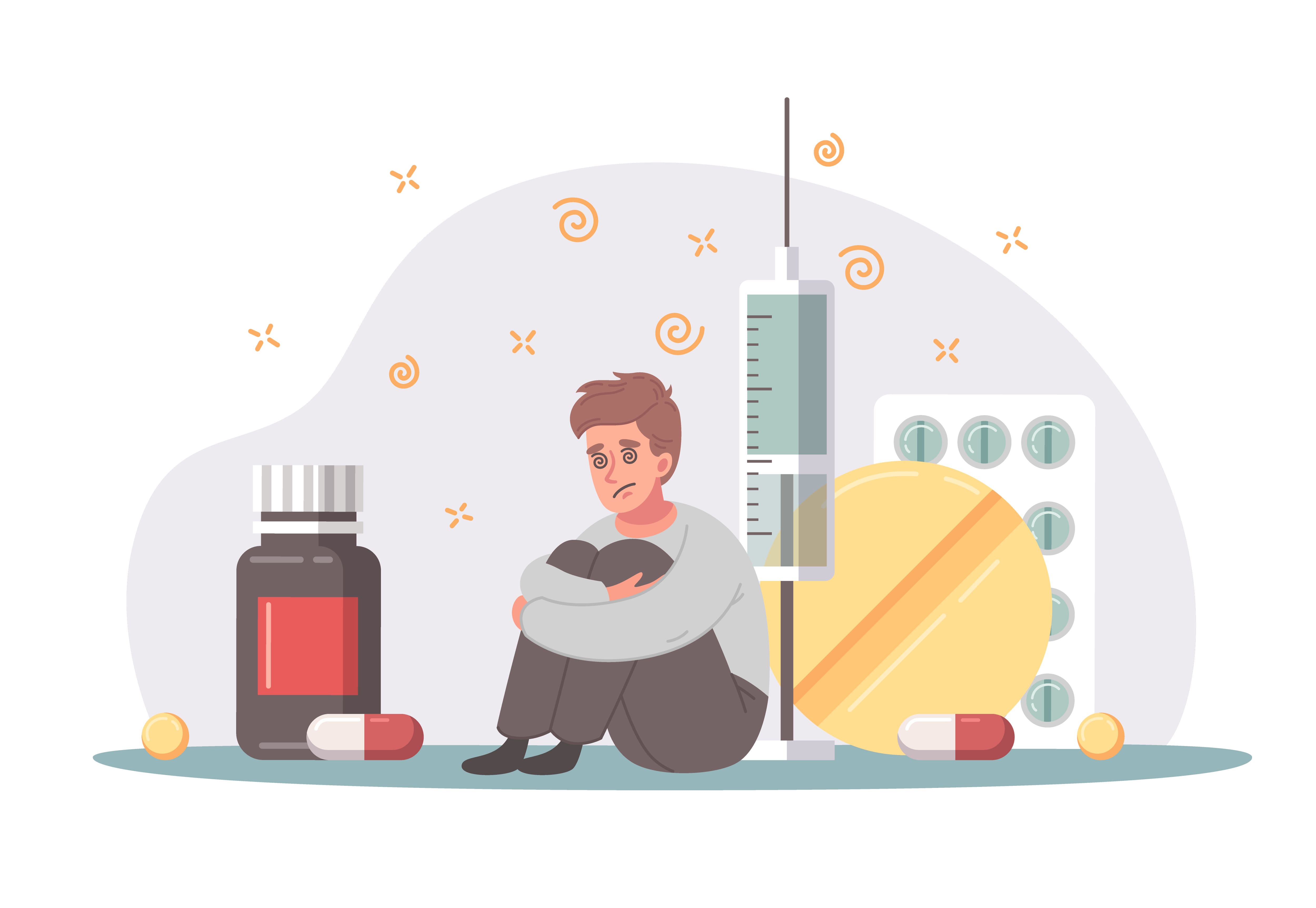
Anyone can become addicted to opioid drugs. To lower your chances of abuse, consider the risk factors:
Signs of opioid addiction are cravings, inability to control using, and continuing drug use despite the negative consequences it creates in your daily life.
If opioids are prescribed, learn all you can from your health care provider. Ask about:
1. Non-opioid pain treatment options.
2. Your personal risk for opioid addiction.
3. Precise directions for using opioids and for the shortest period possible.
4. Interactions with other medications you are using.
Drug addiction is complex but once diagnosed it can be treated like any other condition. If you have been using opioids long term, don't try to stop without medical supervision. Referral to a therapist who specializes in opioid withdrawal and a support group can help. Withdrawal symptoms can include extreme anxiety, overall body pain, gastrointestinal distress and insomnia.
Using opioids for chronic pain is often ineffective. And the CDC and other groups discourage providers from prescribing opioids for most cases of chronic pain. Opioid use for chronic pain is also dangerous because the body becomes used to the drug and requires more and more for pain relief, increasing the risk of accidental overdose.
Studies show that on average, opioids made only a small difference for people with conditions such as osteoarthritis, fibromyalgia and sciatica. And the modest pain relief may cost you side effects, including nausea, vomiting, constipation and drowsiness.
For chronic pain, work with your provider to find ongoing, non-opioid options, such as NSAIDS, acetaminophen, physical therapy, topical medications, acupuncture, and nerve blocks. We have safer and more effective therapies than opioids for chronic pain.

Type 1 diabetes occurs when the pancreas makes little or no insulin. The hormone insulin is needed to move glucose into body cells where it can be burned for energy. But if this does not happen normally, type 1 diabetes can result It usually begins in childhood, though adults can sometimes develop this autoimmune disorder.
The most common symptoms of type 1 diabetes: increased thirst, frequent urination, severe hunger, unexpected weight loss and fatigue. Weakness, irritability, mood changes and blurred vision can also occur. Bedwetting may begin in children who usually do not wet the bed.
The cause? In type 1 diabetes the body's immune system destroys the insulin-producing cells in the pancreas, an organ in the abdomen that helps convert food into fuel. Viruses or environmental factors can trigger the condition. It's more likely to occur in people with certain genes or a family history (parent or sibling) of the disease.
See your health care provider right away if you develop symptoms of type 1 diabetes. Treatment usually involves monitoring glucose levels, taking insulin and following a supportive eating and exercise plan.
Manage the terrible twos?
Toddlers want to do things more independently.
At this stage, they must also learn limits. When they can't accomplish things or express themselves constructively,
frustration and misbehavior may follow. Here are ways to navigate this temporary but often turbulent phase:
OTC meds for colds and flu?
A: Medications available over-the-counter do not cure the common cold or influenza. But they may alleviate symptoms and temporarily help you feel better:
DECONGESTANTS: They decrease nasal or sinus congestion. Side effects include anxiety, insomnia or increased heart rate and blood pressure. Use of decongestant nose sprays should not exceed 3 days to avoid rebound congestion. Tip: Consider using a saline nasal spray instead.
ANTIHISTAMINES: Excess drainage? Antihistamines can help dry up a runny nose or watery eyes. But they may make you drowsy and thicken the mucous, allowing secretions to build up.
COUGH SUPPRESSANTS: They're useful for frequent coughing, especially if it's painful or keeps you awake.
DRUGS FOR FEVER AND ACHES: Acetaminophen and ibuprofen can provide relief; check labels to ensure you're not getting the same ingredient from multiple products. Note: People younger than 19 should avoid aspirin, which is a cause of Reye's syndrome.
BREAST CANCER: Latest Advice
More women are surviving breast cancer today, largely due to improvements in early detection.
Some good news:
American Cancer Society (ACS) statistics show the breast cancer death rate dropped 40% between 1989 and 2016 -
saving 322,000 lives. And fewer than 1 in 6 women diagnosed will die of the disease.
However, breast cancer remains the most commonly diagnosed cancer in women, after skin cancer. And it is a major, potentially long-term health problem with more than 268,000 new cases expected this year. Most diagnoses and deaths from breast cancer occur in women after age 50. Men account for 1% of breast cancer cases and deaths.
Is breast cancer preventable? In recent decades, countless studies have helped to identify the risks and protective factors for breast cancer.
ACS SCREENING GUIDELINES for Women at Average Risk
Age 40 to 44: Discuss screening with your provider by age 40.
Age 45 to 54: Get annual mammograms.
Age 55-plus: Get mammograms every 1 to 2 years, depending on personal risk.
Important: Ask your health care provider about the best screening approach based on your health history. If possible, choose a testing facility that uses digital mammography with potentially better detection.
Age: Risk increases with age.
Age at menopause: After age 55 risk is 30% higher than menopause before age 45.
Alcohol use: 2 to 3 drinks a day raises risk 20% above non- drinkers.
Smoking: Raises risk in younger, premenopausal women.
Blood estrogen: Having higher levels after menopause.
Family history: Having a first degree relative who had breast, ovarian or prostate cancer.
Genetic mutations: Includes BRCA1 and BRCA2 genes.
Dense breast tissue: Reduces cancer detection on mammograms.
Other factors that may slightly increase risk: birth control pill use; estrogen-plus- progestin menopausal hormone replacement therapy; high bone density at post-menopause; and being Caucasian.
Protective factors that may REDUCE RISK:
Get moving every day to improve your odds against breast cancer as many studies over the past 20 years have consistently shown. Scientists believe that physical activity regulates hormones (including estrogen and insulin) that can fuel breast cancer growth.
How much exercise? More activity is better than less, and more vigorous activity is more effective. The ACS recommends all adults engage in at least 150 minutes of moderate-intensity or 75 minutes of vigorous-intensity activity each week, preferably spread over your week. Note: It's important to build up to those levels; get 20 to 30 minutes of brisk walking each is an excellent exercise plan, but you can mix it up with biking, swimming or similar activities that get your exertion to about the same level.
Making sure your child is up-to-date on immunizations gives them a head start on their health and their entire life. Despite inaccurate and misleading information that often pops up online, vaccines have a proven track record for safety. From babyhood through old age, vaccines are effective protection from serious diseases - preventing lost school days as well as potential disabilities and even deaths.
The chances of your child getting measles, pertussis or other vaccine. preventable discases end to be statistically low, according to the CDC, and that's because vaccines work and have reduced the rate of these illnesses.
Your child cannot get by without the protection immunization offers if he or she has been exposed to a vaccine-preventable illness.
What's more, by making sure your child is vaccinated, you are not only protecting your youngster, but helping stop the spread of discases 10 other kids, families and communities,
August is Immunization Awareness Month, a good time to consult with your child's health care provider if you have questions about vaccines. The CDC also provides information about vaccines, including the recommended immunization schedule for infanthood through age 18 at cdc.gov/vaccines/parents/visit/birth-6-vaccine-schedule.html.
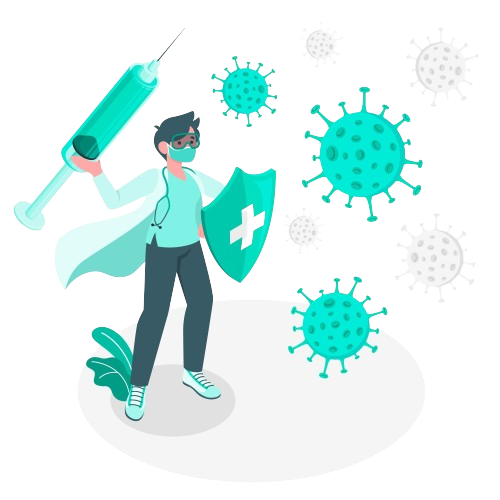
A: Breastfeeding has many health benefits for both babies and moms.
Here we've named a few in honor of Breastfeeding Month.
Babies: Breast milk is an ideal food for most babies. It's easy to digest and contains just the right amount of fat, sugar, water and protein to help babies grow. Nursing provides infants with nutrients and antibodies that help protect them against infections, diarrhea, allergies and asthma. The risks of obesity, type 2 diabetes and sudden infant death syndrome are lower in breastfed babies.
Mothers: Some women who breastfeed their babies find weight loss easier after childbirth, but others find it makes no difference. Nursing mothers miss less work since their infants are sick less often. And the mothers have lower risks of type 2 diabetes and certain cancers of the breasts and ovaries.
Note: Not every mother is able to breastfeed. Remember, “fed is best,” regardless of whether you choose breastfeeding or formula.

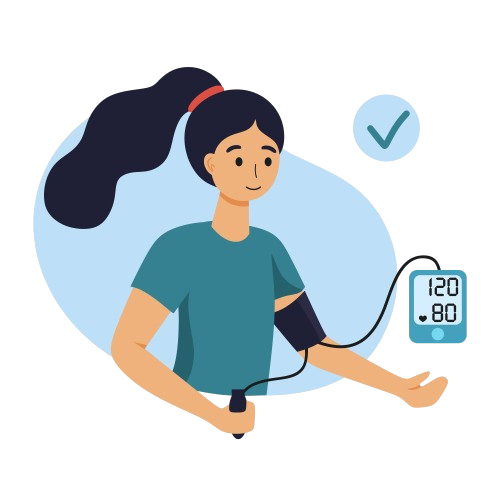
Normal healthy blood pressure is under 120 systolic and under 80 diastolic. Elevated blood pressure (EBP) is 120 to 129 systolic and less than 80 diastolic. People with EBP are likely to develop high blood pressure unless they act to prevent it.
Untreated, a 20-point higher systolic or a 10-point higher diastolic number can double your risk of death from a heart attack or stroke.
High blood pressure numbers:
Stage 1 HBP is 130 to 139 systolic or 80 to 89 diastolic.
Stage 2 HBP is 140 systolic or higher or 90 diastolic or higher.
If you reach either stage, your health care provider will likely recommend lifestyle changes, maybe medication (depending on cardiovascular risks or family history), and regular follow-ups until your BP is controlled.
You have a 90% chance of developing HBP. This number has increased recently, partly because more Indians are overweight and living longer. Younger people are being impacted the most, as hypertension has tripled among adults under age 45.
If you are diagnosed with HBP, work with your provider to:
1. Learn how you can self-monitor your BP levels day to day. Get a home monitor approved by your provider, and learn the best times for checking your BP, and when not to check it (e.g., within 30 minutes of smoking, drinking coffee or exercising). Have your medical clinic check your home blood pressure monitor for accuracy.
2. Learn to control your BP with positive daily choices. Adopting a diet-and-lifestyle approach is the recommended first-line treatment for people with stage 1 hypertension who are at low risk for developing heart disease.
BEST bit
COVID-19 Basics
COVID-19 is a highly infectious disease. It is spread mainly person to person within about 6 feet of each other. Droplets released by coughing and sneezing are inhaled through the mouth and nose, and potentially the lungs.
People may not show symptoms until several days after they become infected. In that time, they can spread the virus to many people. To reduce infection risk, stay at least 6 feet away from other people.
Symptoms are cough, fever and shortness of breath. If you have these symptoms, and you've had contact with a person who has COVID-19 or you live in or have recently visited an area with COVID-19, contact your health care provider immediately. The CDC says symptoms may appear 2 to 14 days after exposure.
Frequent handwashing is the most important step to protect yourself and others. Use soap and water for at least 20 seconds. Rub your hands to create a lather that covers your entire hands. When? After you cough or sneeze, before food preparation and eating, after using the bathroom and after touching high-contact surfaces, including door handles, elevator buttons and stair railings. No soap and water? Use alcohol-based hand sanitizer with at least 60% alcohol.
Q: What causes anxiety?
A: While most of us experience anxiety on occasion, when it becomes severe or prolonged we may become concerned about its origin. Possible causes of anxiety include:
Anxiety can be treated effectively with psychotherapy and medication. When the underlying cause is a medical condition or drug reaction, treating that issue is often the first priority. If you don't know what's causing your anxiety, see your health care provider, who can help you find the right treatment.
"Trust yourself. Create the kind of self that you will be happy to live with all your life. Make the most of yourself by fanning the tiny, inner sparks of possibility into flames of achievement." -Golda Meir
Diabetes is a complex disease that affects your body's primary source of energy-glucose (sugar). By far, the most common form of diabetes is type 2. It's caused by resistance to the hormone insulin, which is needed to get glucose into your cells. When this occurs, glucose accumulates in your bloodstream, leading to several serious complications. Learn the facts:
Myths Vs. Facts

BEST bits
Once you've had the flu, do you still need a flu shot? Yes, because you can't always be certain that what you had was influenza, and we're exposed to dozens of viruses that cause similar symptoms. Even if your health care provider diagnoses your illness as seasonal flu, we're subject to multiple new strains of influenza each year, so you need protection against those you haven't had. It's best to get your annual flu shot by late October.
Let's build fit kids. Type 2 diabetes is becoming more common in children and teens, due to more obesity and sedentary living; about a third of American youth are overweight. Take charge family-style: Your kids are more likely to accept foods you eat, stay active if you're active, and avoid smoking if you're a non- smoker. Discourage foods and drinks and high-calorie, low-nutrient prolonged screen viewing and other sedentary activities.
November is Lung Cancer Awareness Month. Many people with this disease are unaware they have it because the symptoms can be subtle and develop slowly. More obvious symptoms include: persistent cough or hoarseness that gets worse; ongoing chest pain and shortness of breath; and frequent bronchitis or pneumonia. If you have symptoms, visit your health care provider without delay.
Good news: People with type 2 diabetes can sometimes restore their blood sugar levels to normal just by eating a healthy diet, exercising regularly and losing weight.

Working in cold weather can keep you alert, but it also has its hazards—namely frostbite, hypothermia and falls on icy surfaces. When you have to work outdoors, follow this advice:
Dress with at least 3 layers of loose-fitting clothing (windbreakers are recommended for an outer layer).
Avoid getting wet, and if you begin to sweat, remove a layer.
Wear a hat or head protection. If necessary, wear a knit or synthetic rubber mask to cover your face.
Protect your feet by wearing wool socks and insulated, waterproof shoes or boots. Make sure footwear has plenty of traction.
Wear gloves. Glove liners paired with insulating gloves work best.
Keep extra clothing handy in case you get wet.
Watch your step. Ice is often hard to see. If you can't avoid the ice, take small shuffling steps until you get to dry pavement.
Once indoors, make sure you wipe your feet or take off footwear to prevent wet floors, and a risk of falling.
Take indoor breaks if the weather is too cold.
SAFETY corner
Guard Your B-A-C-K
Hurting your back from improper lifting is all too common. Here are some reminders for safe lifting:
BEND your knees, not your waist, and use your legs, not your back, to power the lift.
ALWAYS get close to the object or pull the object close before lifting, keeping your back as straight as possible.
CALL someone to help if the load is too heavy. Or use a hand truck.
KEEP your head up and don't twist your body while lifting or carrying.
Antibiotic medicines have been fighting serious bacterial diseases and saving lives for decades. Most of the antibiotics we use today were introduced to the market between 1940 and 1962. Each type of antibiotic contains multiple forms, either developed over time or modified with previous types.
Today, there are few new antibiotics being developed. At the same time, our massive use of antibiotics has increased the rate and spread of resistant bacteria. This resistance is now a serious global health problem because most major bacterial infections are becoming resistant to commonly used antibiotics.
Misuse or overuse of antibiotics is partly to blame for highly contagious and deadly superbugs (including MRSA, CRE and Shigella). Some bacteria are naturally resistant to certain antibiotics; others mutate and become harder to treat.
6 Steps to Safe Antibiotic Use
Taking antibiotics you don't need can lead to antibiotic resistance. Before using an antibiotic, review the following guidelines with your health care provider:
Antibiotics save lives, but any time antibiotics are used, they can cause side effects and lead to antibiotic resistance. Learn more: cdc.gov/antibiotic-use/
Things that spread antibiotic-resistant bacteria include:
Help protect yourself from bacterial infection:
For most healthy people, following these basic principles can go a long way in helping to prevent infections.
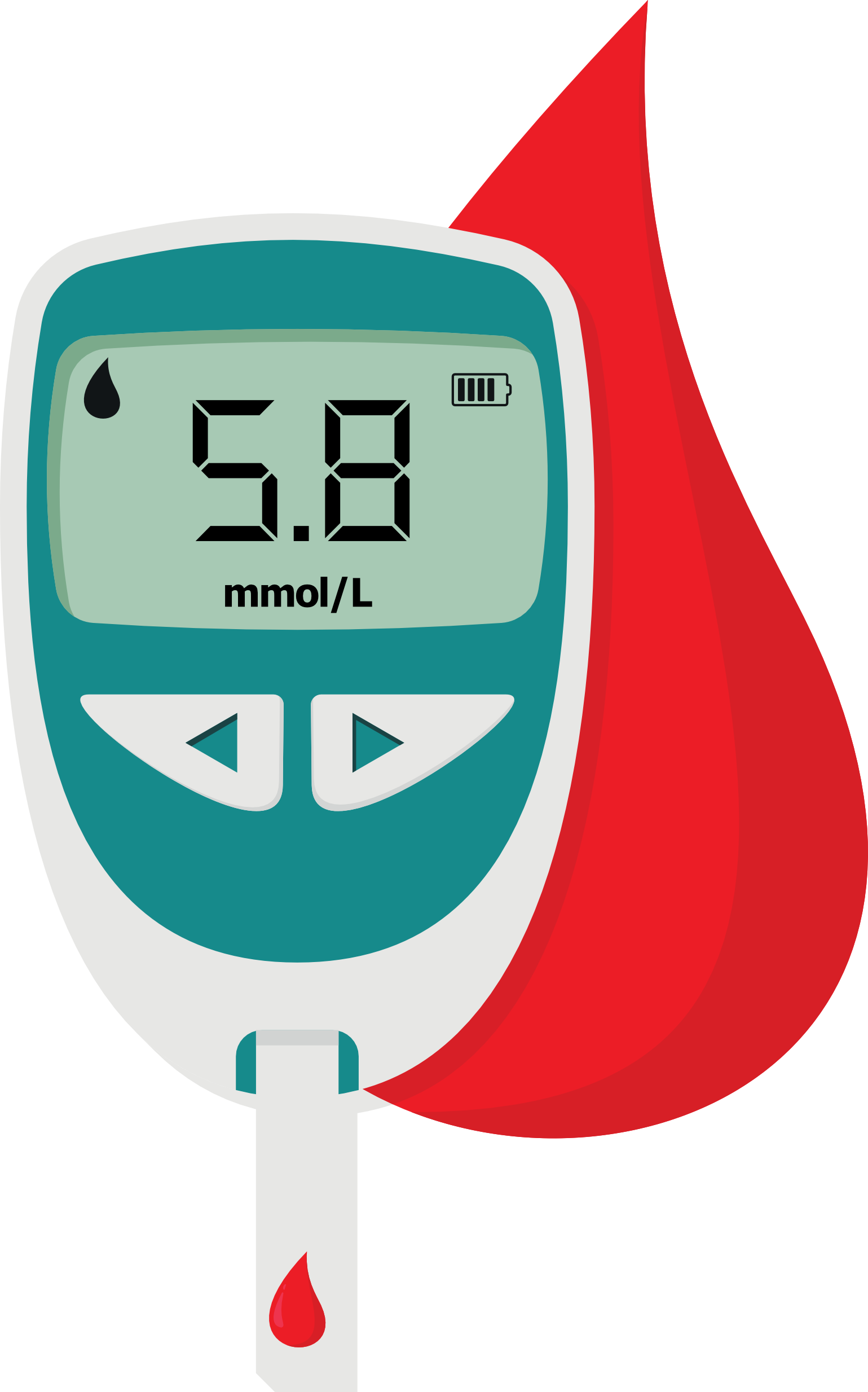
The CDC recently reported that those adults, who have prediabetes, mostly don't know they have it. Prediabetes often has no clear symptoms, so it often goes undetected until serious health problems show up.
Prediabetes is a serious disorder that raises the risk of developing type 2 diabetes, heart disease, stroke and generally poor health.
Risk factors for prediabetes include family history of diabetes and being overweight and inactive. Add smoking to the list smokers are significantly more likely to develop diabetes than nonsmokers.
If you've been diagnosed with prediabetes, you can reverse it by lowering high blood sugar that can lead to type 2 diabetes. Lifestyle changes - and medication, if necessary - can bring sugar levels back to a healthy range.
Two steps to lower prediabetes risk:
1. Develop healthier eating habits. Choose whole foods (such as vegetables, fruit, beans, fish, poultry, nuts and whole grains), while reducing the intake of highly processed foods and sweets. That can help you control or lose weight, and stabilize blood sugar levels.
2. Exercise moderately (such as brisk walking) at least 150 minutes a week. Maintaining moderate weight loss and regular exercise can improve your body's use of insulin- the key to healthy blood sugar. More exercise, moderate or vigorous, is even better.
Young people are also at risk for developing diabetes early in life. Nearly one in five adolescents (ages 12 to 18) and one in four young adults (ages 19 to 34) are living with prediabetes, according to a 2019 CDC study. Higher rates were seen in youths who were male or obese
Time to get tested? If you or your teens have any of the risk factors noted above, ask your health care provider about testing. Prediabetes can be targeted and reversed.
During Healthy Skin Month in November, review these face saving tips from the American Academy of Dermatology:
Wash your face gently after you wake up and before going to bed to reduce bacteria buildup. No scrubbing; it can worsen acne and rosacea.
Use a mild alcohol-free cleanser, rinse well and apply a daily moisturizer containing sunscreen.
To avoid premature skin aging and skin cancer, don't smoke and don't tan.
Outdoors, always use sunscreen labeled broad spectrum and SPF 30 (or higher).
Check for signs of cancer. Routinely look for spots that differ from others or that change, itch or bleed. See your provider if you spot something odd.
In this time of COVID-19, getting your annual flu shot is more important than ever. While there's no available COVID-19 vaccine, flu vaccination reduces your risk for hospitalization during the COVID-19 pandemic.
At high risk for flu (and COVID-19) are people who smoke, have heart disease, diabetes, asthma or other chronic lung problems, as well as children, pregnant women and people older than 65. The flu shot is recommended for everyone age six months and older. With both viruses circulating, it's especially important to get your flu shot as soon as possible.
Note: People can get sick from the flu and COVID-19 at the same time (co-infection). Don't wait.
Have you ever looked in the mirror and felt bad about the color of your teeth because they might be yellower than you’d like? Many of us have gone through the same thing. Because the yellowing of teeth happens gradually, it can be easy to become complacent. Luckily, yellow teeth are not an indication of a serious medical problem. Read on to find out what causes yellowing of the teeth, and how you can avoid or limit exposure to those things.
Reasons why teeth turn yellow
Ageing
Research indicates that advancing age is a natural factor in the discoloration process of the teeth. Many times genetic factors and family history also contribute to this condition. As a person starts to age, the tooth starts to lay down more dentin, thus reducing the pulp which in turn diminishes the translucent effect of the teeth, giving off a more yellow shade.
Enamel Thinning
As the enamel layer of the teeth starts wearing down and thinning itself due to chewing, the yellow dentin is exposed making the teeth look yellower. Dentin is a deep, yellow to brown, tinged material inside our teeth under the enamel. It is the primary cause for teeth appearing yellow. Color changes occur when the enamel starts scraping off and more of the dentin reveals itself.
Faulty Diet
Sauces, dark curries and black coffee are big culprits which tend to stain the teeth if used excessively and regularly, since they contain chemicals known as tannins, which are famous for their blemishing properties. Their residue tends to stick on the teeth surface, tarnishing the enamel. Soda and fizzy drinks are also big contributors to discoloration of teeth. These items create stains on the teeth surface.
Smoking
Nicotine is not only a bad addiction, but the tar from smoking is pretty damaging to oral hygiene- even leading to gum diseases and mouth cancers in cases. Chewing tobacco also falls under this category. Heavy smokers often complain of ending up with ugly brownish/yellowish teeth, a bad odor and crippled teeth.
The most apparent effect of smoking is the discoloration of the teeth, often leading to social embarrassment. People spend lavish amounts later on whitening treatment, but the best treatment is to quit smoking.
Grinding
Many people adopt the habit of grinding teeth as a stress release method. Some do it unconsciously while asleep. This habit is damaging to the tooth enamel thus weakening it and leading to brittle and yellow teeth.
Certain Diseases and Medications
Research indicates that few diseases directly affect the enamel and dentin in the mouth. Cancer patients who undergo chemotherapy and radiation end up with discolored teeth due to the chemical reactions occurring in the body. In addition, some antibiotic medications can also stain teeth.
Many times people use strong mouth washes which contain ingredients like chlorhexidine and which are said to erode the teeth enamel causing discoloration.
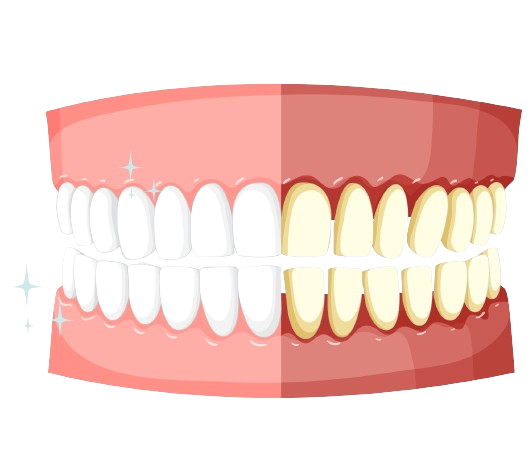
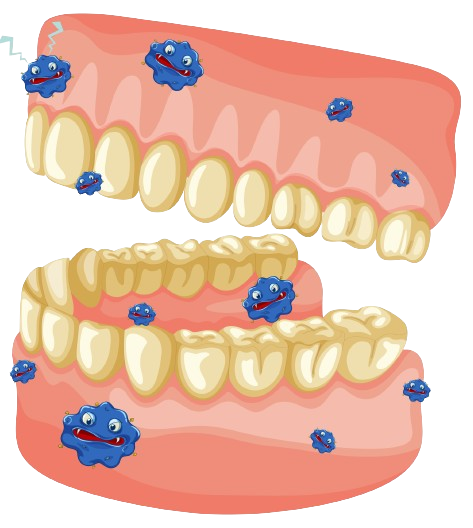
Some helpful remedies to get rid of the problem
While having yellow teeth can make you shy away from smiling in public, it is possible to prevent or treat this issue with a little effort. Let’s take a look at some of the remedies.
Brushing and Flossing
This is the most vital dental mantra anyone can follow to prevent the problem altogether. Whenever plaque and tartar are deposited on teeth as a result of poor brushing habits, they start to appear yellow. So regular brushing is the best antidote for plaque deposits in the mouth.
Regular dental check-ups also help in keeping oral hygiene under check, and your dentist can identify the problem as soon as it buds or before it turns into a more complex issue.
Whitening toothpastes
There are certain whitening toothpastes available in the market which contains natural bleaching properties. These generally contain stronger ingredients than conventional toothpastes and help phase out stubborn teeth stains to an extent.
Whitening gels and strips
These are more economical and available over the counter too. They are known for their lightening wonders, and deposit a thin film of peroxide gel onto the plastic strips. They usually come in shapes that fit snugly onto the teeth surface. The results are swift and typically seen in few days and can last up to few months. They lighten the teeth by one or two shades.
Limit sugary and high-carb foods
If you are looking for a long term solution, it’s wise to limit or cut sugary foods, fizzy drinks and high-carb foods as they disturb the tooth enamel. High citrus or acidic fruits tend to wear down the enamel and activate tooth decay and staining real fast.

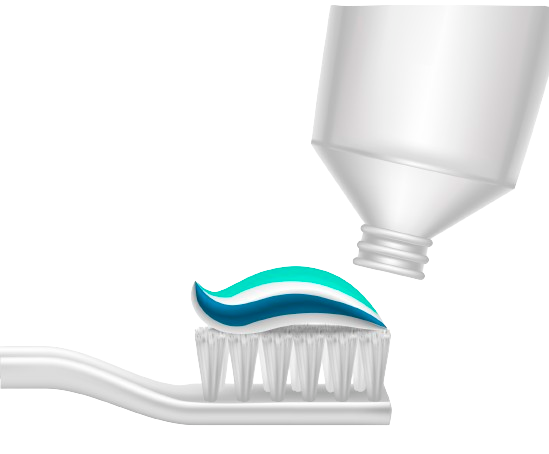
General home remedies
Nature has gifted us with numerous natural and herbal remedies found in our environment. Among such natural remedies is baking soda and hydrogen peroxide which have natural whitening properties in them. A paste made up of these two and applying it onto teeth removes the plaque deposits and cleans stains. While this generally considered to-be safe, it’s best to consult your dentist before doing this.
Get plenty of calcium
Calcium is like a lifeline for teeth and will prevent enamel erosion. Its regular use will strengthen the enamel and gum lining. Milk, dairy products and broccoli are loaded with calcium.
To conclude, everyone envies a wide smile with white sparkling pearlies lined up beautifully. It gives off a confident aura to others. So yes, while yellow teeth can be distressing, it is possible to prevent discoloration by actively committing to taking care of oral hygiene and following other remedies.

Chronic daily headache is a type of frequently occurring headache which may be further classified as either:
Chronic daily headache is thought to most typically occur as a result of medication overuse. The increasing severity and frequency of headache symptoms is usually a withdrawal effect of addictive pain killers used to treat migraine or other types of primary headache. Frequent and regular use (and particularly overuse) of medications used to treat headaches can induce headaches and increase the individual’s requirement to use medication.
Chronic daily headache may also occur without medication overuse, when tension-type, cluster or migraine headaches become more frequent and intense. Some individuals with chronic daily headache who overuse medications fail to improve with withdrawal of the addictive medication, suggesting that medication overuse did not influence the onset of their chronic daily headaches.
Medication overuse and chronic migraine headaches, although once considered the same condition, are now diagnosed according to separate criteria. They are alternative subtypes of chronic daily headache. Chronic migraine is a relatively new term, which replaces transformed migraine and refers to headaches which are predominately migrainous in nature and occur in individuals who do not overuse pain relief medications. Those who overuse medication should not be diagnosed with chronic migraine but with medication overuse headache.

Risk factors for chronic daily headache
Chronic daily headache occurs in individuals with a history of a primary headache syndrome. Those who experience more frequent headaches have a greater risk of developing the condition. Other factors which increase the risk include:
Progression of chronic daily headache
Chronic daily headache typically is thought to occur as a withdrawal effect upon cessation of addictive or habituating medications. It may also be termed rebound headache, or, preferably, medication overuse headache. Regular overuse of these medicines or simple analgesics (e.g. paracetamol) for as little as 3 months may also cause chronic migraine. Chronic migraines may also occur after long term correct use, for example:
The mechanism through which migraine medications cause habituation is not well understood and differs depending on the type of medication. NSAIDs, paracetamol, codeine and dihydrocodeine are thought to cause rebound headaches through altering the neurological pathways involved in pain responses, while combination analgesics containing codeine or caffeine appear to cause such headaches due to their addictive properties. Individuals with chronic migraine experience 20 headache days per month on average, and on 15 of these days a migraine-type headache is experienced.
Chronic migraine - Symptoms
To receive a diagnosis of chronic migraine, you must fulfill the following criteria:
a) Unilateral;
b) Pulsating;
c) Moderate or severe;
d) Aggravated by or causing you to avoid routine physical activity; AND
e) Nausea and/or vomiting; OR
f) Photophobia (light sensitivity) and/or phonophobia (sound sensitivity).
Prognosis of chronic daily headache
Chronic daily headaches are amongst the most severe and challenging types of headaches to treat, and are associated with significant disability for the individuals who experience them. The degree of disability experienced by an individual with chronic daily headache is significantly worse than that experienced by an individual who experiences episodic headaches.
How is chronic daily headache treated?
Chronic daily headache is treated differently depending on whether or not the condition occurs as a result of medication overuse, as medication over-users typically fail to respond to medicines used to treat migraine.
Chronic migraine without medication overuse
The majority of individuals who experience chronic migraine (found to be 70% in one study) use medicines to treat acute headache episodes. Treatment of acute episodes of chronic migraine involves the use of similar agents used in episodic migraine treatment.
Content is sourced from public domain & is provided by Vidal Health for educational & informational purposes. It should not be considered as a substitute to medical advice. Vidal Health makes every effort to ensure accuracy or completeness of editorial content, However we do not take responsibility for any errors, omission & also do not take responsibility to ensure that data, information of material is kept up to date. The views expressed in these articles are not necessarily those of Vidal Health. Reproduction, modification, storage in a retrieval system or retransmission, in any form or otherwise, for reason other than educational & for informational purposes are strictly prohibited without prior written permission of Vidal Health.
Corporate Office: Vidal Health Insurance TPA Pvt. Ltd. First Floor, Tower No. 2, SJR I-Park, EPIP Zone, Whitefield, Bangalore - 560066
Phone : +91080-48057205
Email : customerservice@vidalhealth.com
